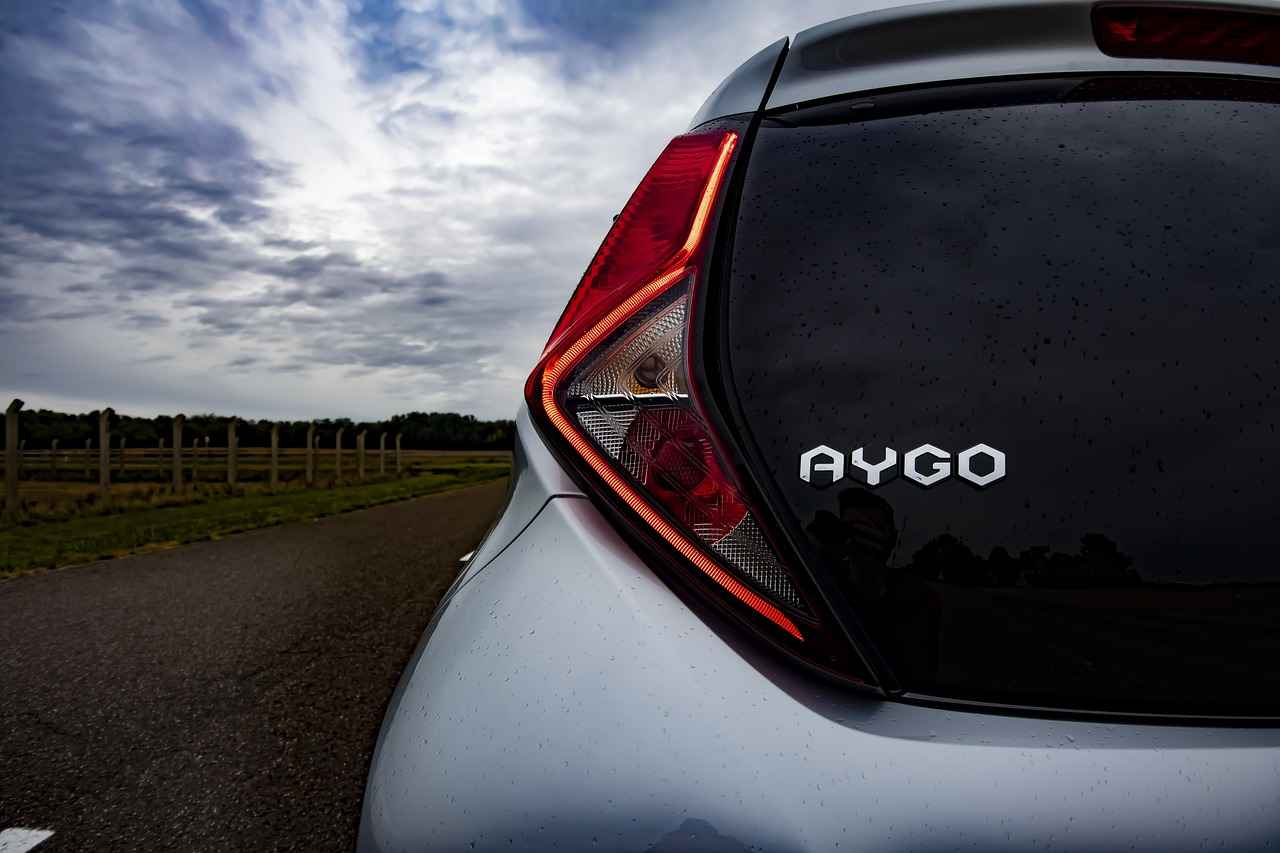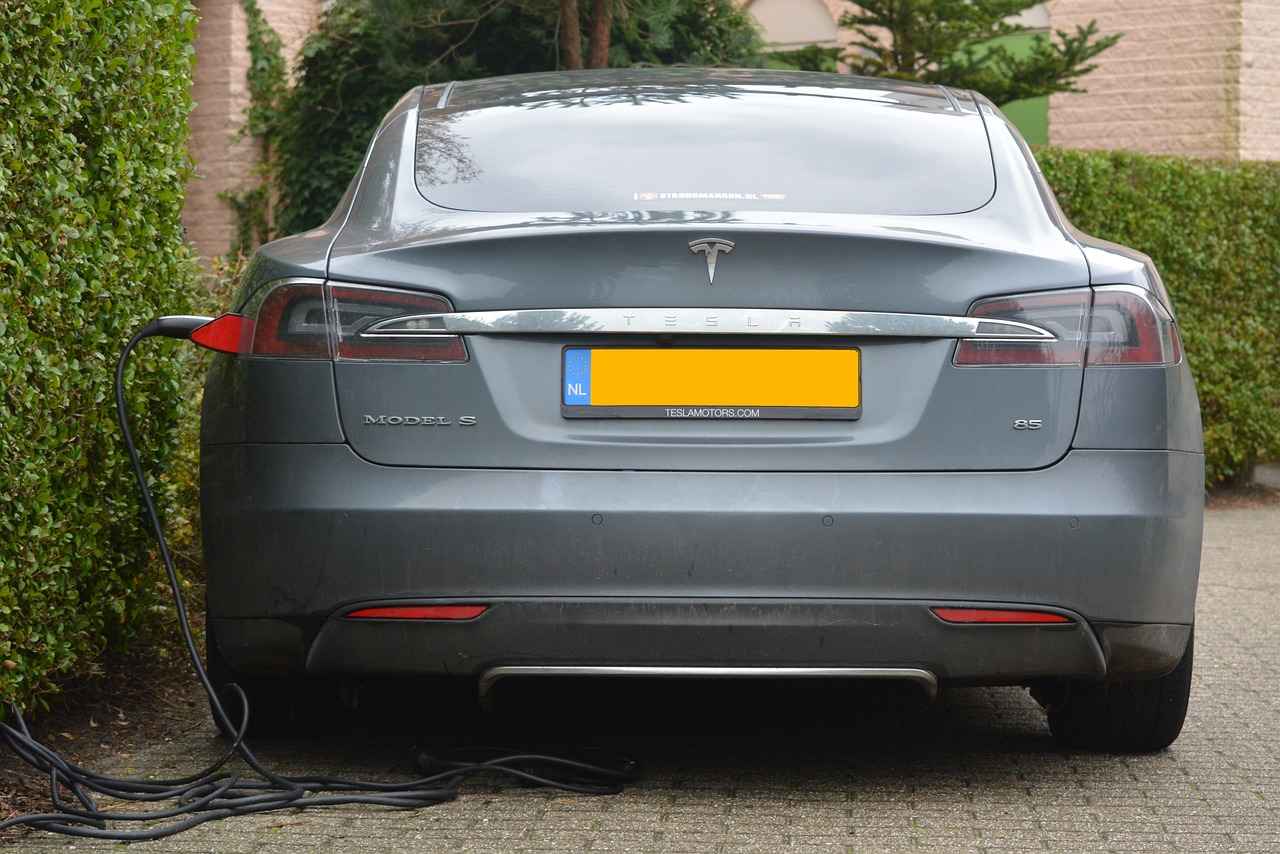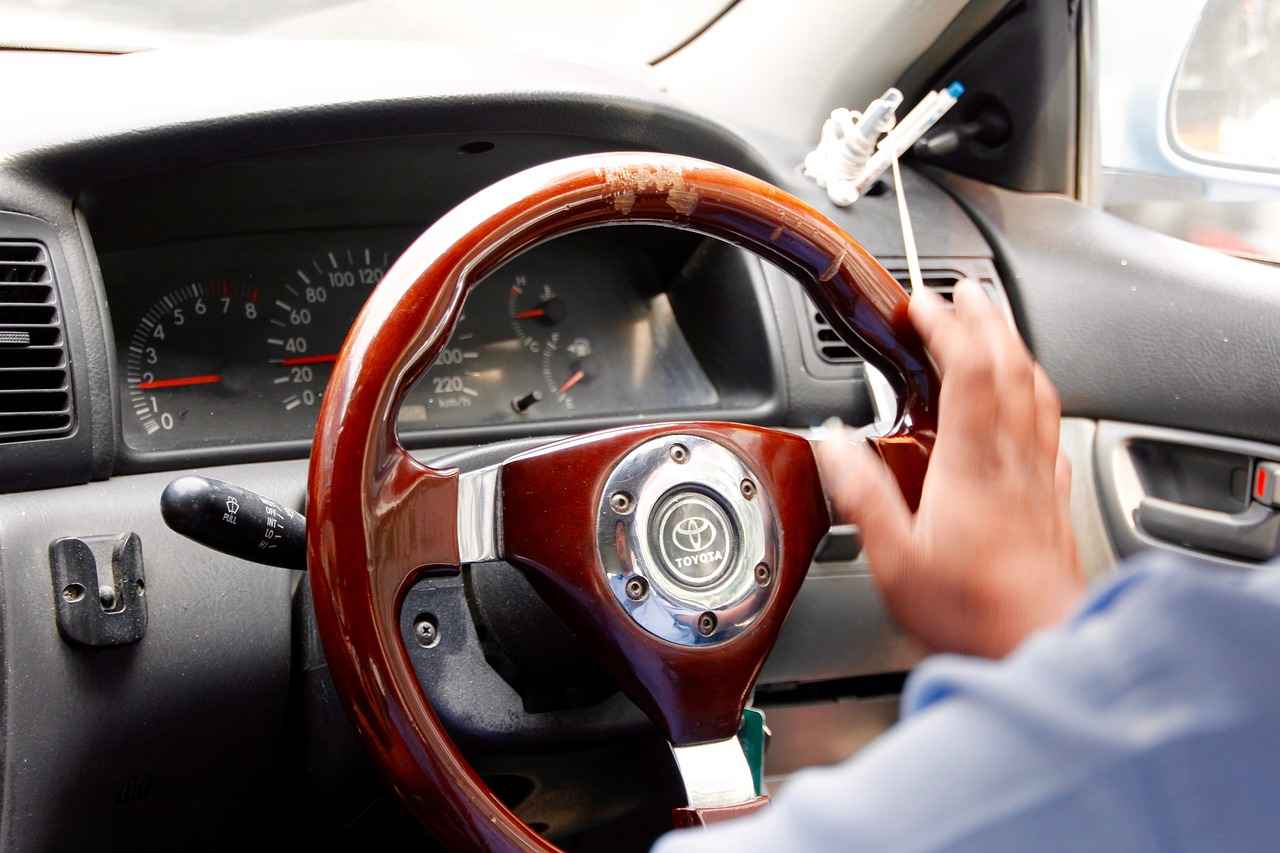Rain sensing windshield wipers are becoming increasingly popular in modern vehicles, and for good reason. This article will delve into their functionality, benefits, and potential drawbacks, helping you determine whether these advanced wipers are a worthwhile investment for your vehicle.
Rain sensing windshield wipers are sophisticated automotive features designed to automatically adjust the wiper speed based on the intensity of rainfall. By providing this level of convenience, they enhance visibility for drivers, particularly during sudden showers.
These wipers utilize optical sensors that detect moisture on the windshield. When rain hits the glass, the sensors activate the wipers and adjust their speed accordingly. This ensures optimal performance under varying weather conditions, allowing drivers to keep their attention on the road.
The technology behind rain sensing wipers typically involves infrared light. When raindrops land on the windshield, they disrupt the light pattern, triggering the wipers to respond instantly. This quick reaction is crucial for maintaining visibility during adverse weather.
- Enhanced Safety: Automatic adjustment allows drivers to focus on the road without the distraction of manually changing wiper settings.
- Convenience: No need to fumble with controls during unexpected downpours.
- Consistent Performance: Ensures optimal wiper speed for changing weather conditions.
Many modern vehicles integrate rain sensing wipers with other systems, such as automatic headlights. This means that when the rain sensors detect moisture, the vehicle’s lights may also turn on, further enhancing safety and visibility.
Despite their advantages, rain sensing wipers do have some limitations. For instance, they can be sensitive to dirt or debris on the windshield, which may affect their performance. Additionally, some users report that the sensors can misinterpret light rain, leading to unnecessary wiper activation.
Considering the convenience and safety benefits, many drivers find that investing in rain sensing windshield wipers is justified, especially for those who frequently drive in rainy conditions. The initial cost may be higher, but the long-term advantages can outweigh the expense.
While the upfront cost of vehicles equipped with rain sensing wipers may be greater, the long-term benefits—such as improved safety and convenience—often make it a worthwhile investment. Additionally, these wipers can potentially prolong the lifespan of the windshield by reducing wear from manual wiper use.
Many users report a significant improvement in driving comfort with rain sensing wipers. They appreciate the hands-free operation during unpredictable weather, allowing for a more relaxed driving experience. Feedback often highlights the wipers’ ability to adapt quickly to changing conditions, providing peace of mind.
In summary, rain sensing windshield wipers offer a blend of convenience, safety, and technological advancement that can enhance your driving experience. As you weigh the pros and cons, consider how often you encounter rainy conditions and whether the benefits align with your driving habits.

What Are Rain Sensing Windshield Wipers?
Rain sensing windshield wipers are becoming an increasingly popular feature in modern vehicles, providing a level of convenience that enhances the driving experience. These advanced wipers automatically detect rain on the windshield and adjust their speed accordingly, which can significantly improve visibility and safety during inclement weather.
Rain sensing windshield wipers are sophisticated systems designed to enhance driving comfort and safety. They utilize advanced technology to automatically adjust the speed of the wipers based on the intensity of rainfall. This means that drivers no longer need to manually change the wiper settings, allowing them to focus more on the road.
The functionality of these wipers is rooted in the use of optical sensors. These sensors are strategically placed on the windshield and work by emitting infrared light. When raindrops hit the glass, they disrupt the light pattern, which signals the wipers to activate. This automatic response ensures that the wipers operate at the optimal speed for the current weather conditions, providing clear visibility at all times.
The technology behind rain sensors is quite fascinating. By employing infrared light, these sensors can detect even the slightest amount of moisture. Once the moisture is detected, the system quickly adjusts the wiper speed, ensuring that drivers are not caught off guard by sudden downpours.
- Enhanced Safety: Automatic adjustment allows drivers to maintain their focus on the road rather than fiddling with wiper settings.
- Increased Convenience: With rain sensing wipers, the need for manual intervention is eliminated, making driving less stressful during rainy conditions.
- Improved Visibility: Consistent wiper speed adjustments ensure that the windshield remains clear, which is crucial for safe driving.
Many modern vehicles have begun to integrate rain sensing wipers with other systems, such as automatic headlights. This means that when the rain sensor activates the wipers, the headlights can also turn on automatically, providing an additional layer of safety and visibility for the driver and other road users.
While rain sensing wipers offer numerous advantages, they are not without their limitations. For instance, the sensors can sometimes be sensitive to dirt or debris on the windshield, which may affect their performance. Additionally, extreme weather conditions, such as heavy snow or ice, can hinder their effectiveness.
For many drivers, the benefits of rain sensing windshield wipers outweigh the initial costs. The convenience and safety enhancements they provide make them a worthwhile investment, especially for those who frequently drive in rainy conditions.
While vehicles equipped with rain sensing wipers may come at a higher price point, the long-term benefits—such as improved safety and reduced driver distraction—often justify the expense. Additionally, the technology can potentially lead to lower maintenance costs over time by reducing wear and tear on manual wiper systems.
Many users have reported positive experiences with rain sensing wipers, noting a significant improvement in driving comfort and safety. The convenience of hands-free operation during unpredictable weather is often highlighted as a major advantage, making these wipers a popular choice among drivers.

How Do Rain Sensing Windshield Wipers Work?
Rain sensing windshield wipers are a remarkable advancement in automotive technology that significantly enhance driver safety and convenience. Understanding how these wipers work can help you appreciate their value and functionality, especially during adverse weather conditions.
Rain sensing windshield wipers utilize sophisticated optical sensors to detect moisture on the windshield. When raindrops come into contact with the glass, they disrupt the light patterns emitted by these sensors. This disruption is what triggers the wipers to spring into action, adjusting their speed based on the intensity of the rainfall.
The technology behind these sensors typically employs infrared light to monitor the windshield’s surface. When the windshield is dry, the light reflects back to the sensor in a consistent pattern. However, as rain begins to fall, the raindrops create a scattering effect that alters this light pattern. The sensor detects this change almost instantaneously, prompting the wipers to activate and adjust their speed accordingly.
- Automatic Activation: The wipers engage automatically when moisture is detected, allowing drivers to keep their hands on the wheel and eyes on the road.
- Speed Adjustment: The wipers can change speed to match the rainfall intensity, ensuring optimal visibility without the need for manual adjustments.
- Enhanced Safety: By reducing distractions, these wipers enhance overall driving safety during sudden weather changes.
In addition to their primary function, rain sensing wipers often integrate with other vehicle systems, such as headlights. This integration ensures that the headlights turn on automatically during rain, further improving visibility and safety. This interconnected functionality exemplifies how modern vehicles are designed to offer a seamless driving experience.
However, it’s important to note that rain sensing technology is not without its limitations. For instance, the sensors can be sensitive to dirt or debris on the windshield, which may affect their performance. Regular maintenance and cleaning of the windshield are essential to ensure that the sensors operate effectively.
Moreover, while the technology is generally reliable, there may be instances where the sensors misinterpret light reflections or other environmental factors, leading to unnecessary wiper activation. This can be particularly frustrating for drivers who are accustomed to manually controlling their wipers.
Despite these drawbacks, the benefits of rain sensing windshield wipers often outweigh the potential issues. Many drivers report a significant improvement in their overall driving experience, particularly those who frequently navigate through rainy conditions. The convenience of having wipers that automatically adjust to changing weather conditions cannot be overstated.
In summary, understanding how rain sensing windshield wipers work highlights their importance in modern vehicles. Their ability to detect moisture and adjust wiper speed automatically enhances safety and convenience, making them a valuable feature for many drivers. With ongoing advancements in automotive technology, these systems are likely to become even more sophisticated, further improving their effectiveness and reliability.
Understanding the Technology Behind Rain Sensors
Rain sensors are an innovative technology designed to enhance the driving experience, particularly during adverse weather conditions. They play a crucial role in ensuring safety and convenience for drivers by automating the operation of windshield wipers. But how do these sensors actually work?
Rain sensors typically utilize infrared light to detect moisture on the windshield. When raindrops make contact with the glass, they disrupt the beam of infrared light emitted by the sensor. This disruption is detected by the sensor, which then sends a signal to activate the windshield wipers. The system is designed to adjust the speed of the wipers based on the intensity of the rain, providing a seamless experience for the driver.
- Infrared Light Detection: The core technology relies on infrared light, which is invisible to the human eye. This allows the sensor to function effectively without being obstructed by visible light interference.
- Real-time Response: The moment raindrops hit the windshield, the sensor reacts almost instantaneously, ensuring that the wipers are activated without delay.
- Adaptive Speed Adjustment: Depending on the amount of rainfall detected, the system can modify the speed of the wipers. Light rain may prompt a slow wipe, while heavy downpours can trigger rapid movements.
One of the standout features of rain sensors is their ability to enhance driver focus. With traditional wipers, drivers often need to manually adjust the speed based on changing conditions, which can be distracting. However, with rain sensing technology, the need for constant adjustments is eliminated, allowing drivers to concentrate on the road ahead.
Moreover, rain sensors are often integrated with other vehicle systems, such as automatic headlights. This means that when the rain sensor detects moisture, it can also signal the headlights to turn on, further improving visibility during inclement weather.
However, despite their many advantages, rain sensors are not without limitations. For instance, their performance can be compromised by dirt, debris, or even ice on the windshield. If the sensor’s lens is obstructed, it may fail to detect moisture accurately, leading to ineffective wiper operation. Additionally, some drivers may find that the sensitivity of the sensors can be overly reactive, causing the wipers to activate in light mist or even when the windshield is merely damp.
In summary, understanding the technology behind rain sensors reveals a sophisticated system designed to enhance driving safety and comfort. By utilizing infrared light to detect moisture and automatically adjusting wiper speed, these sensors provide a level of convenience that traditional wipers cannot match. However, potential users should also be aware of their limitations and ensure that their vehicle’s sensors are kept clean for optimal performance.
Benefits of Automatic Adjustment
Rain sensing windshield wipers have revolutionized how we drive in inclement weather. One of the most significant benefits of these advanced wipers is their automatic adjustment of wiper speed. This feature allows drivers to maintain their focus on the road, rather than constantly fiddling with the wiper settings during sudden downpours.
When rain begins to fall, the optical sensors integrated into the wipers detect moisture on the windshield. This immediate response means that drivers can enjoy a safer driving experience since they are not distracted by the need to adjust wiper speeds manually. In critical situations, such as heavy rain or unexpected weather changes, this can significantly enhance road safety.
Moreover, the automatic adjustment feature ensures that the wipers operate at optimal speed, providing clear visibility without overworking the wiper motor. This not only prolongs the lifespan of the wipers but also contributes to energy efficiency in modern vehicles. By reducing wear and tear, drivers can save on maintenance costs in the long run.
In addition to safety and efficiency, the convenience of rain sensing wipers is unparalleled. Imagine driving through a torrential downpour without needing to adjust your wipers constantly. This hands-free operation allows drivers to concentrate on other critical aspects of driving, such as navigating traffic or monitoring road conditions, which is especially vital during adverse weather conditions.
Furthermore, many vehicles with rain sensing technology also integrate this feature with other systems, like automatic headlights. This means that as soon as the rain begins, not only do the wipers activate, but the headlights turn on as well, further enhancing visibility. Such integration provides a comprehensive safety net for drivers, ensuring that they are well-prepared for any unexpected changes in weather.
However, it is essential to note that while rain sensing wipers offer numerous advantages, they are not without their drawbacks. For example, if the windshield is dirty or covered in debris, the sensors may not function correctly, leading to inconsistent wiper performance. Therefore, regular maintenance and cleaning of the windshield are crucial for ensuring the effectiveness of this technology.
In summary, the automatic adjustment of wiper speed in rain sensing windshield wipers significantly enhances driver safety and convenience. By allowing drivers to keep their attention on the road, these wipers reduce distractions and improve overall driving experience. Whether you frequently encounter rainy conditions or simply value the added safety features, investing in a vehicle equipped with rain sensing wipers is a decision that many drivers find beneficial.
Integration with Other Vehicle Systems
In today’s automotive landscape, integration of advanced technologies is becoming increasingly common. One such innovation is the rain sensing windshield wipers, which not only enhance driving comfort but also work seamlessly with other vehicle systems to improve overall safety. This article delves into the integration of rain sensing wipers with other features, particularly focusing on their connection with headlights and other systems.
Rain sensing wipers are designed to detect moisture on the windshield using sophisticated optical sensors. When rain begins to fall, these sensors automatically activate the wipers, adjusting their speed based on the intensity of the rainfall. This automatic response allows drivers to focus on the road rather than manually adjusting their wipers, which can be particularly beneficial during sudden downpours.
One of the most significant advantages of rain sensing wipers is their integration with headlights. In many modern vehicles, these systems work together to enhance visibility during adverse weather conditions. When the rain sensors detect moisture, they can trigger the headlights to turn on automatically. This feature ensures that the vehicle is more visible to other drivers, reducing the risk of accidents.
The combination of rain sensing wipers and automatic headlights significantly improves visibility. During heavy rain, visibility can be drastically reduced. With the headlights turning on automatically, drivers can see better, and their vehicles become more noticeable to others on the road. This enhanced visibility is crucial for safe driving.
- Convenience: Drivers do not need to manually turn on their headlights when it starts to rain.
- Increased Safety: Enhanced visibility can prevent accidents during poor weather conditions.
- Improved Comfort: Less distraction allows drivers to concentrate on the road ahead.
While the integration of rain sensing wipers with headlights offers numerous benefits, there are also challenges to consider. For instance, if the sensors become obstructed by dirt or debris, they may not function correctly, leading to potential safety issues. Additionally, some drivers may find the automatic activation of headlights unnecessary during light rain or mist, leading to unwanted battery drain.
As automotive technology continues to advance, the integration of rain sensing wipers with other systems is expected to evolve further. Future developments may include more sophisticated sensors that can differentiate between various weather conditions, allowing for even more precise control of wipers and headlights. This could lead to a more tailored driving experience, enhancing both safety and comfort.
In summary, the integration of rain sensing windshield wipers with other vehicle systems, particularly headlights, represents a significant advancement in automotive safety technology. By ensuring that both wipers and lights operate in harmony during adverse weather conditions, drivers can enjoy a safer and more comfortable driving experience. As technology continues to progress, we can expect even greater innovations that will further enhance the way we interact with our vehicles.
Limitations of Rain Sensing Technology
Rain sensing windshield wipers are an innovative technology designed to enhance driving safety and convenience. However, like any advanced system, they come with their own set of limitations that users should be aware of. Understanding these limitations is crucial for making an informed decision about whether to invest in this feature for your vehicle.
While rain sensing wipers offer significant benefits, they also have a few drawbacks that can impact their performance:
- Sensitivity to Dirt and Debris: One of the most common issues with rain sensing wipers is their potential sensitivity to dirt, dust, or debris on the windshield. When these particles accumulate, they can obstruct the optical sensors, leading to inaccurate readings and ineffective wiper operation.
- Variable Rain Conditions: Rain intensity can vary greatly, and sometimes the sensors may not react as expected during light drizzles or sudden downpours. This inconsistency can lead to frustration for drivers who rely on these systems for seamless operation.
- Calibration Issues: Rain sensors require proper calibration to function correctly. If they are misaligned or not calibrated according to the manufacturer’s specifications, their performance can be significantly compromised, leading to unexpected wiper behavior.
- Incompatibility with Certain Windshields: Some aftermarket windshields or tints may interfere with the proper functioning of rain sensors. It is essential to ensure that any windshield replacements are compatible with the existing sensor technology.
- Cost of Repairs: If the rain sensing system malfunctions, repairs can be costly due to the advanced technology involved. This potential expense is an important factor to consider when evaluating the overall investment.
Despite these limitations, there are several strategies that users can adopt to enhance the performance of their rain sensing wipers:
- Regular Cleaning: Keeping the windshield clean is crucial. Regularly washing the windshield and ensuring that the area around the sensors is free from dirt and debris can significantly improve their functionality.
- Periodic Calibration: Have the rain sensors checked and calibrated during routine vehicle maintenance to ensure they are functioning correctly and responding accurately to rain conditions.
- Use Quality Replacement Parts: If a windshield needs to be replaced, make sure to use high-quality parts that are compatible with the vehicle’s rain sensing technology.
While the limitations of rain sensing wipers are notable, many drivers find that the advantages often outweigh the drawbacks. The convenience of automatic wiper activation and the enhanced safety it provides during adverse weather conditions can be invaluable. However, it is essential for potential buyers to consider these limitations carefully and weigh them against their specific driving needs and conditions.
In conclusion, rain sensing windshield wipers represent a significant technological advancement in automotive safety. Understanding their limitations, such as sensitivity to dirt and the potential for calibration issues, allows drivers to make informed decisions and maintain their vehicles effectively. With proper care and attention, the benefits of rain sensing wipers can greatly enhance the driving experience.

Are Rain Sensing Windshield Wipers Worth the Investment?
When it comes to driving in adverse weather conditions, particularly in rain, visibility is paramount. Rain sensing windshield wipers have emerged as a popular automotive feature designed to enhance safety and convenience for drivers. But are they truly worth the investment? This article delves into the benefits, functionality, and considerations surrounding these innovative wipers.
One of the primary advantages of rain sensing windshield wipers is their ability to automatically adjust the wiper speed based on the intensity of the rainfall. This means that as the rain becomes heavier, the wipers will automatically increase their speed, and vice versa. This feature allows drivers to maintain focus on the road without the distraction of manually adjusting the wipers, which can be particularly beneficial during sudden downpours.
Rain sensing wipers utilize advanced technology, primarily optical sensors, to detect moisture on the windshield. These sensors emit infrared light, which, when interrupted by raindrops, signals the wipers to activate. This seamless operation not only enhances visibility but also provides a level of convenience that traditional wipers cannot match.
Many modern vehicles integrate rain sensing wipers with other safety features, such as automatic headlights. This integration ensures that when rain is detected, the headlights turn on automatically, further improving visibility during poor weather conditions. Such features contribute to a more comprehensive safety system, making driving in the rain less hazardous.
Despite their numerous benefits, rain sensing windshield wipers do have some limitations. For instance, if the windshield is dirty or obscured by debris, the sensors may not function properly, leading to inconsistent performance. Additionally, some drivers may find that the sensitivity settings do not always align with their personal preferences, resulting in unexpected wiper activation.
When evaluating whether rain sensing windshield wipers are a worthwhile investment, it’s essential to consider the cost versus the benefits. While vehicles equipped with these wipers may have a higher initial price, the long-term advantages—such as improved safety and convenience—often justify the expense. For those who frequently drive in rainy conditions, the investment can lead to a more comfortable and secure driving experience.
Feedback from drivers who have used rain sensing windshield wipers is largely positive. Many report a significant enhancement in their driving experience, noting that the hands-free operation allows them to concentrate on the road ahead. Users appreciate the peace of mind that comes from knowing their wipers will react appropriately to changing weather conditions.
In conclusion, rain sensing windshield wipers represent a significant advancement in automotive technology, offering both convenience and safety benefits. While there are some limitations to consider, the overall advantages make them a valuable addition for many drivers. If you often find yourself navigating through rain, investing in a vehicle with this feature could greatly enhance your driving experience.
Cost vs. Benefit Analysis
When considering the purchase of a vehicle, many factors come into play, especially when it comes to advanced features like rain sensing windshield wipers. These innovative components not only enhance driving safety but also provide a level of convenience that can be invaluable in adverse weather conditions. In this section, we will delve into a of rain sensing wipers to help you determine if the investment is worthwhile.
The initial cost of vehicles equipped with rain sensing windshield wipers can be significantly higher than those without. This is due to the added technology and sensors required for their operation. On average, the price increase can range from $200 to $500, depending on the vehicle model and manufacturer. However, it is essential to consider this cost in the context of the overall vehicle investment.
While the upfront costs may seem daunting, the long-term benefits of rain sensing wipers can far outweigh the initial expense. These wipers automatically adjust their speed based on the intensity of the rain, allowing drivers to maintain their focus on the road. This feature can significantly enhance driving safety, particularly during sudden downpours when visibility is compromised.
Another critical advantage of rain sensing wipers is the reduction of driver fatigue. With these wipers, drivers do not need to manually switch speeds or turn them on and off, which can be particularly distracting during heavy rain. By ensuring optimal visibility at all times, these wipers contribute to a more relaxed driving experience.
Modern vehicles often integrate rain sensing wipers with additional systems, such as automatic headlights. This means that when the wipers activate, the headlights will also turn on, further enhancing visibility and safety. This integration can be seen as an added value, making the investment in rain sensing wipers even more compelling.
Despite their many benefits, rain sensing wipers are not without drawbacks. One of the most significant issues is their sensitivity to dirt and debris on the windshield. If the sensor is obstructed, it may not function correctly, leading to unreliable operation. Regular maintenance and cleaning of the windshield are essential to ensure optimal performance, which could be viewed as an additional cost.
Many drivers who have invested in vehicles with rain sensing wipers report a significant improvement in their overall driving experience. Users often highlight the convenience of hands-free operation and the enhanced safety during unpredictable weather conditions. Feedback suggests that the benefits often justify the initial cost, particularly for those who frequently drive in rainy climates.
In summary, while the initial investment in rain sensing windshield wipers may be higher, the long-term benefits—such as improved safety, convenience, and integration with other vehicle systems—often outweigh the added expense. For many drivers, especially those who encounter frequent rain, the advantages of these advanced wipers make them a worthwhile addition to their vehicle. Ultimately, it is essential to weigh your driving habits and conditions against the costs to make an informed decision.
User Experiences and Feedback
When it comes to driving in adverse weather conditions, user experiences with rain sensing windshield wipers have been overwhelmingly positive. Many drivers have expressed how these innovative wipers have transformed their driving experience, particularly during sudden rain showers. This section delves into the feedback from users, highlighting key aspects that contribute to their satisfaction.
Users consistently report a significant enhancement in driving comfort and safety when utilizing rain sensing wipers. The primary benefit noted is the convenience of hands-free operation, which allows drivers to focus on the road without the distraction of manually adjusting wiper settings. This feature is especially appreciated during unpredictable weather, where conditions can change rapidly.
- Improved Visibility: Users mention that the automatic adjustment of wiper speed ensures optimal visibility, allowing them to navigate through heavy rain without strain.
- Enhanced Safety: Many drivers feel safer knowing that their wipers will react instantly to changing conditions, reducing the risk of accidents.
- Less Driver Distraction: The hands-free operation minimizes the need for constant adjustments, enabling drivers to maintain their attention on the road ahead.
While the feedback is largely positive, some users have pointed out a few limitations associated with rain sensing wipers. One common concern is the sensitivity of the sensors. In some cases, dirt or debris on the windshield can interfere with the wipers’ performance, leading to inconsistent operation. Additionally, a few users have reported instances where the wipers activated unnecessarily during light drizzle or mist, causing frustration.
Many drivers who have transitioned from traditional wipers to rain sensing models often express a sense of relief and satisfaction. They appreciate the technology’s ability to adapt to varying rainfall conditions without requiring manual intervention. This comparison often highlights a stark contrast in driving experience, with rain sensing wipers deemed superior in convenience and effectiveness.
When discussing the investment in rain sensing wipers, users frequently note that the benefits they experience justify the initial cost. Many believe that the added safety and comfort make the extra expense worthwhile, especially for those who live in regions with frequent rain. The long-term advantages, such as reduced driver fatigue and enhanced visibility, are often cited as reasons for their endorsement of this technology.
Based on user feedback, it is clear that rain sensing windshield wipers offer a range of benefits that enhance the overall driving experience. While there are some minor drawbacks, the overwhelming consensus is that the advantages far outweigh any potential issues. For drivers who prioritize safety, comfort, and convenience, investing in rain sensing wipers is likely to be a decision they will not regret.
Frequently Asked Questions
- How do rain sensing windshield wipers detect rain?
Rain sensing windshield wipers use optical sensors that detect moisture on the windshield. When raindrops hit the glass, they disrupt an infrared light pattern, prompting the wipers to activate and adjust their speed automatically.
- Are rain sensing wipers reliable in all weather conditions?
While rain sensing wipers are generally reliable, their performance can be affected by dirt or debris on the windshield. Keeping your windshield clean ensures optimal functionality, especially during heavy rainfall.
- Do I need to manually adjust rain sensing wipers?
Nope! That’s the beauty of them! Rain sensing wipers automatically adjust their speed based on the intensity of the rain, allowing you to focus on driving rather than fiddling with controls.
- Can I retrofit my car with rain sensing wipers?
It’s possible, but it might not be straightforward. Retrofitting depends on your vehicle’s make and model, and it may require professional installation to ensure proper functionality.
- Are rain sensing wipers worth the investment?
Absolutely! Many drivers find that the convenience and enhanced safety make the investment worthwhile, especially for those who frequently encounter rainy conditions.


























































